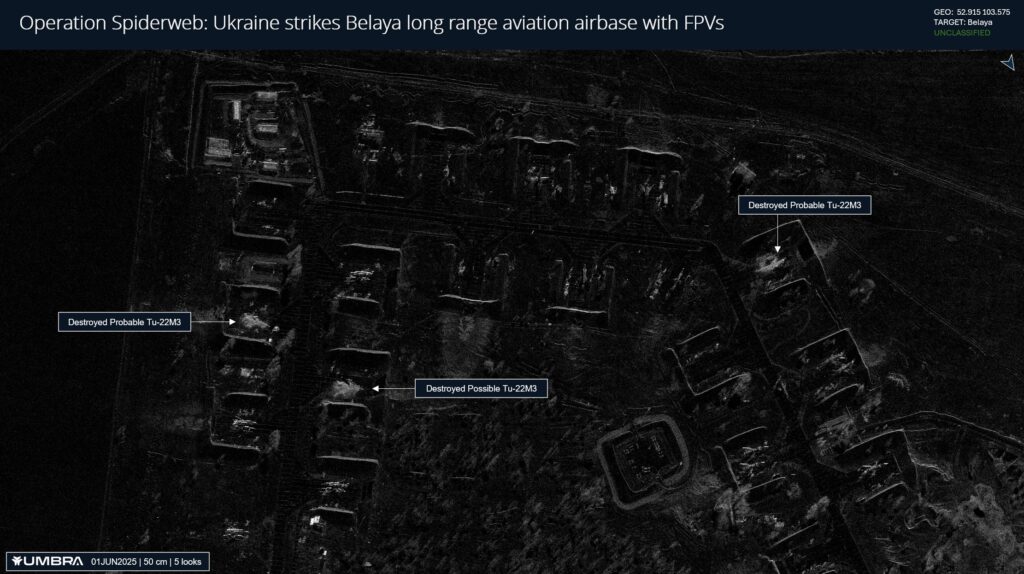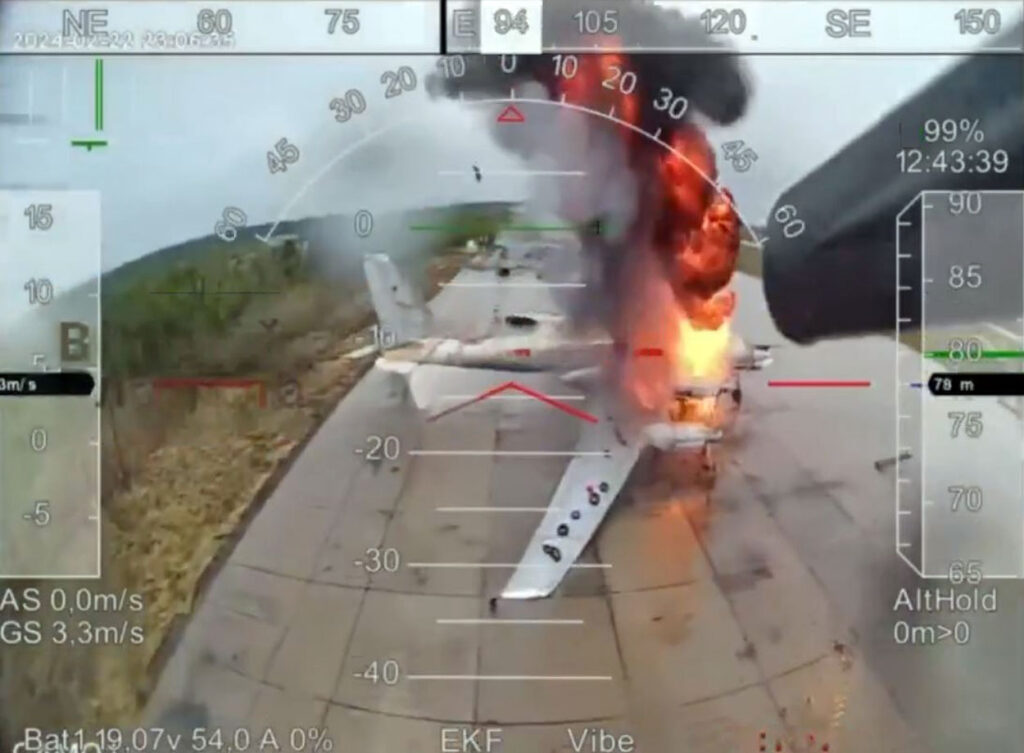Satellite images reveal wreckage of Russian strategic bombers after Ukraine’s Spiderweb drone operation deep in Russia

New satellite imagery has emerged showing the destroyed Russian strategic aircraft at the Belaya air base in Russia’s Irkutsk Oblast, located over 4000 km (2485 miles) away from Ukraine, after smuggled Ukrainian drones struck Russian military airfields on 1 June.
The images, captured by American aerospace company Umbra Space and published by geospatial intelligence consultant Chris Biggers on X, show destroyed and damaged Russian bombers.
Today, Ukrainian intelligence reportedly launched 117 attack drones from trucks that had been placed near Russian air bases. I tasked several collects this morning via @umbraspace and my first images have already started processing. What a remarkable success in a well-executed… pic.twitter.com/LzXulw8jnK
— Chris Biggers (@CSBiggers) June 2, 2025
According to Biggers’ analysis of the satellite data, the strike resulted in the destruction of three Tu-95MS strategic bombers with one additional aircraft damaged, along with one destroyed Tu-22M3 bomber.
A second image reveals what appears to be three Tu-22M3 strategic bombers that were either destroyed or heavily damaged.

The satellite images utilize synthetic aperture radar (SAR) technology, which allows imaging through cloud cover.
Ukrainian Spiderweb operation
The operation, conducted on 1 June, targeted four Russian military airfields: Olenya, Belaya, Dyagilevo, and Ivanovo, using 117 AI-powered FPV drones smuggled into Russia hidden in trucks.
The Security Service of Ukraine (SBU) reports that the strikes hit various Russian aircraft including A-50 early warning planes, Tu-95 strategic bombers, and Tu-22M3 bombers.

Ukraine’s intelligence service claims the operation damaged 41 Russian aircraft, representing what they describe as “34% of strategic cruise missile carriers at their base airfields.” However, independent verification of this figure is not available.
The SBU has stated that personnel involved in preparing the operation, which spanned over 18 months, have returned to Ukraine.
President Volodymyr Zelenskyy revealed that the SBU’s coordination center for the operation was located directly next to a Russian regional FSB [Russia’s Federal Security Service] office, highlighting the boldness and sophistication of the mission.
The Spiderweb operation represents Ukraine’s culmination of developing and utilizing drones for successful modern warfare. Ukrainian drone capabilities rapidly evolved from makeshift, volunteer-built systems into a $2.8 billion domestic industry producing millions of advanced drones, including AI-powered kamikaze models and heavy bombers like the “Baba Yaga.”
Read also
-
Ukraine destroys $7 billion Russian aircraft fleet without warning White House
-
Ukraine’s own drones crash Putin’s $7-billion “red lines” aircraft — while Russia fights them back with sticks
-
Trojan truck op: Kyiv destroys “34%” of Russia’s strategic bomber fleet within hours with truck-launched FPV drones (updated)
-
Killing the killer: Ukraine coordinates most successful Russian bomber strike from hub next to FSB office
-
At least 150 AI-guided Ukrainian drones strike 41 Russian aircraft in historic truck-smuggled strike